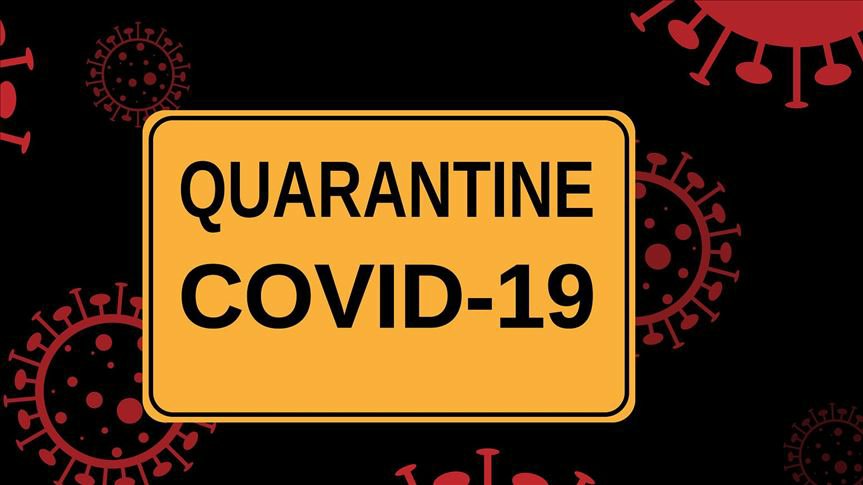
Today’s the first official day that Everett can’t attend school, and tomorrow is Finn’s. This weekend I decided to dig into my ginormous stash of activities and start prepping some cool things to keep the kids engaged. Don’t get me wrong, we will definitely be using way more screen time than we normally do, and we will be keeping things pretty low key in general, but the kids definitely need more than just PJ Masks & Blippi to keep them company!
Our general schedule is going to look somewhat like this.

I’m not great about sticking to a schedule, so this is very generalized and flexible. I will let the kids interest levels dictate how long we work on each activity and adjust as needed.
Day 1 Activities
Today’s activites focused on teaching the kids a bit about why they couldn’t go to school, the importance of hand washing, and some fun color mixing.
Germs Lesson:
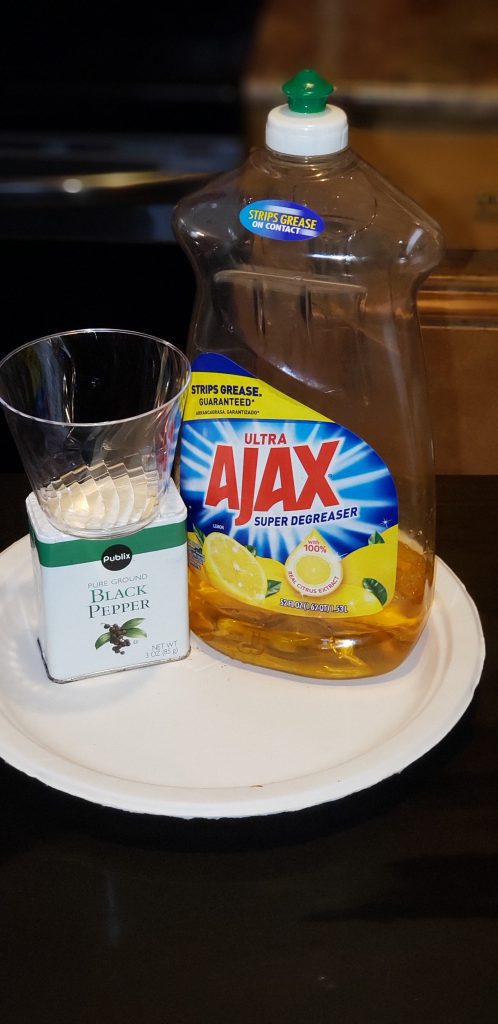
For our first activity, we talked about why they couldn’t go to school and how germs spread. This lesson also showed the importance of handwashing.
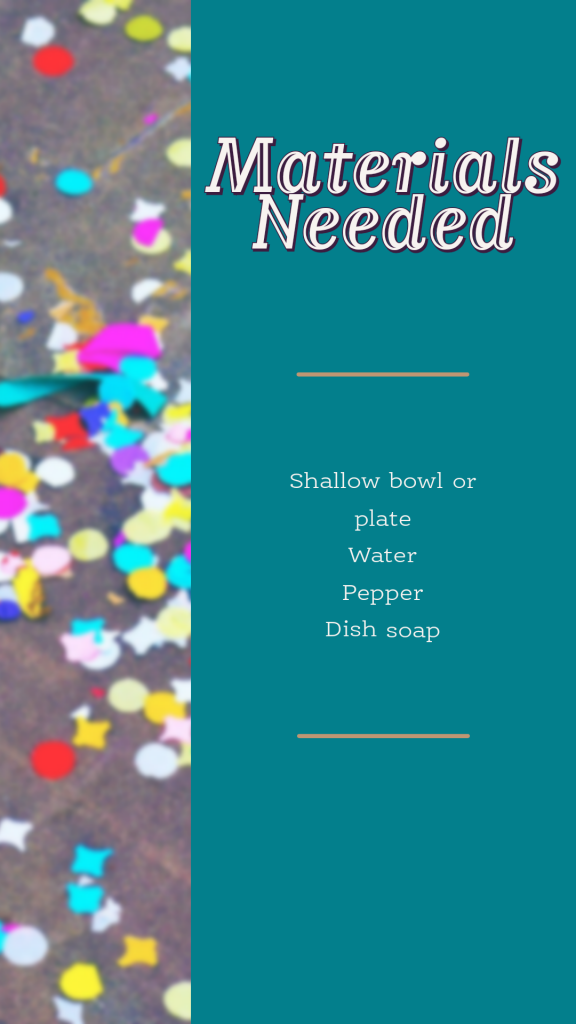
Steps:
- Fill the bowl or plate with about an inch of water.
- Sprinkle pepper evenly across the surface. Try not to sneeze! The pepper flakes should float, not sink, upon the surface of the water.
- Squeeze a little bit of dish soap onto the counter or in a little cup
- Have the child dip their hand in the pepper water.
- Show them the “germs” on their finger.
- Now have them dip their finger in the soap. Stick the soapy finger into the water, right in the center of the plate.
As we did these steps, we talked about germs, handwashing, how germs spread and we came up with a hypothesis for what would happen to the pepper water when they dipped their soap finger in.
Results:
Most of the pepper flakes should have darted to the sides of the pan, and some of the flakes should have fallen to the bottom of the pan. It may have looked like the soap was chasing the pepper flakes away.
Why?
The first question to ask is why the pepper flakes float. Why don’t they sink or dissolve in the water? Well, pepper is hydrophobic, meaning that water is not attracted to it. Because of that, the pepper can’t dissolve in the water. But why do the flakes float on top of the water? Water molecules like to stick together. They line up in a certain way that gives the top of the water surface tension. Because pepper flakes are so light, and hydrophobic, the surface tension keeps them floating on top.
The next question to think about is why the pepper shoots to the sides when soap touches the water. Soap is able to break down the surface tension of water—that’s part of what makes soap a good cleaner. As the soap moves into the water, and the surface tension changes, the pepper no longer floats on top. But the water molecules still want to keep the surface tension going, so they pull back away from the soap, and carry the pepper along with them.
Color Activities
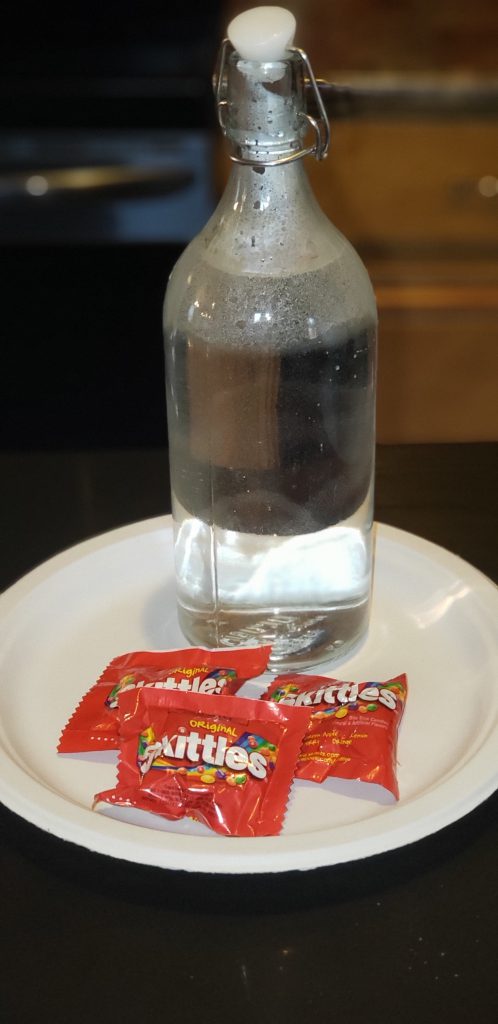
The first color activity we did was making a candy rainbow. This is seriously such a simple and fun experiment! I recently found the stash of leftover Halloween candy that we hid from the kids, so I decided to utilize the skittles I found and I dug around for old paper plates.
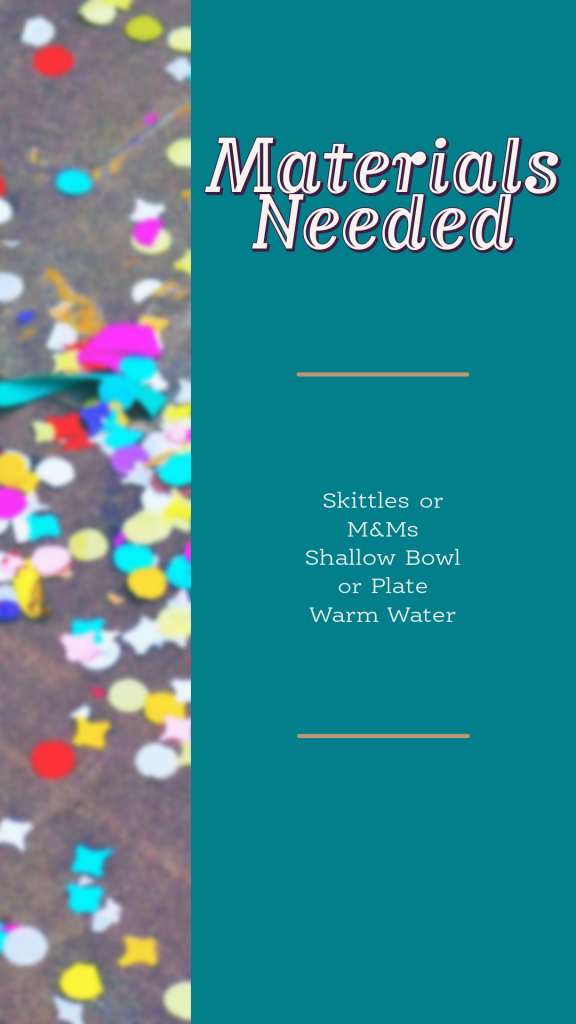
- STEP 1 : You want to empty out your skittles and check out the colors.
- STEP 2: Next, lay out your plates in an are where they won’t be disturbed.
- STEP 3: Now’s the fun part, make patterns! It’s up to you on how you want to place your colors. Make a rainbow or any sort of pattern that interests you. You can experiment with placing different colors next to each other.
- STEP 4: Once you have your patterns placed, gently begin pouring water in the middle of the plate until it reaches all the candies and just barely covers them.
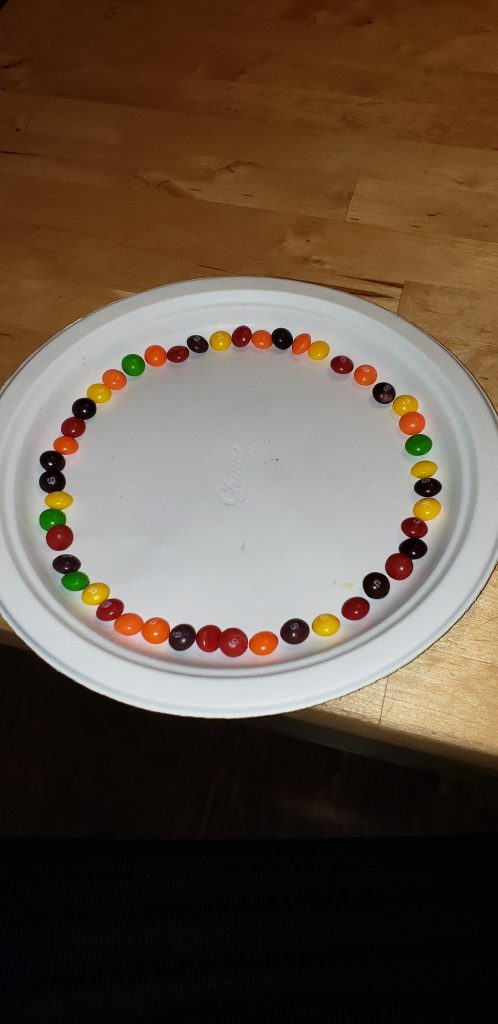
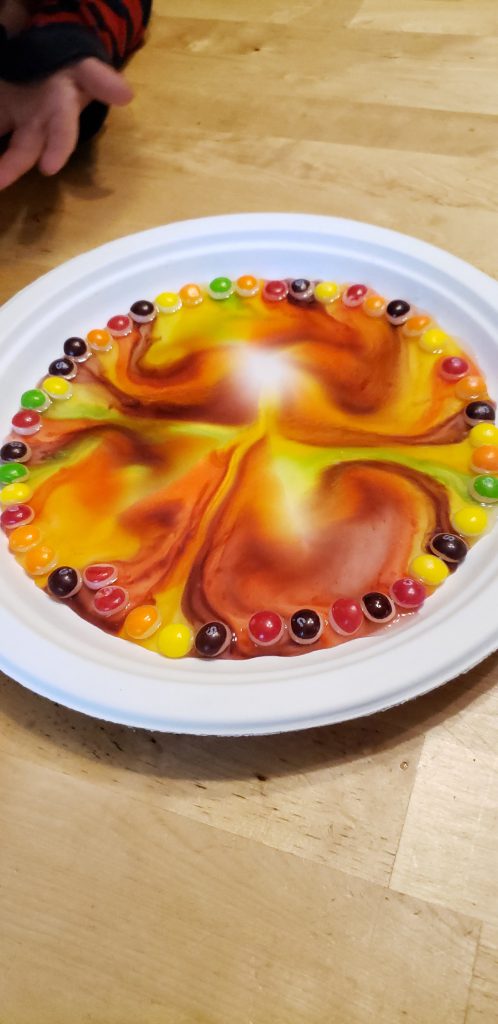
THE SCIENCE BEHIND THE SKITTLES EXPERIMENT
FACTS ABOUT SKITTLES
Skittles are made of ingredients that can dissolve in water. They also do it quickly, so you have neat science right away. Dissolving candy is fun to test out with a variety of liquids and candies. Find out how different candies dissolve at different rates. Dissolving gumdrops also makes a colorful science experiment.
WHY DON’T THE SKITTLES COLORS MIX?
While digging around for information, I learned about a term called stratification. The immediate definition of stratification is the arrangement of something into different groups which is a lot like we see with the skittle colors, but why?
Water stratification is all about how water has different masses with different properties and this may create the barriers that you see among the colors from the skittles.
Still, other sources talk about how each skittle has the same amount of food coloring being dissolved and as the concentration of this color spreads out similarly they don’t mix when they meet up with each other. You can read about this concentration gradient here.
Further Learning:
- Use different liquids
- Use different temperatures
- Try other candies
Color Tray Mixing
Color mixing is an easy way to help kids learn primary and secondary colors and work on fine motor skills, and you probably already have all the ingredients you need.
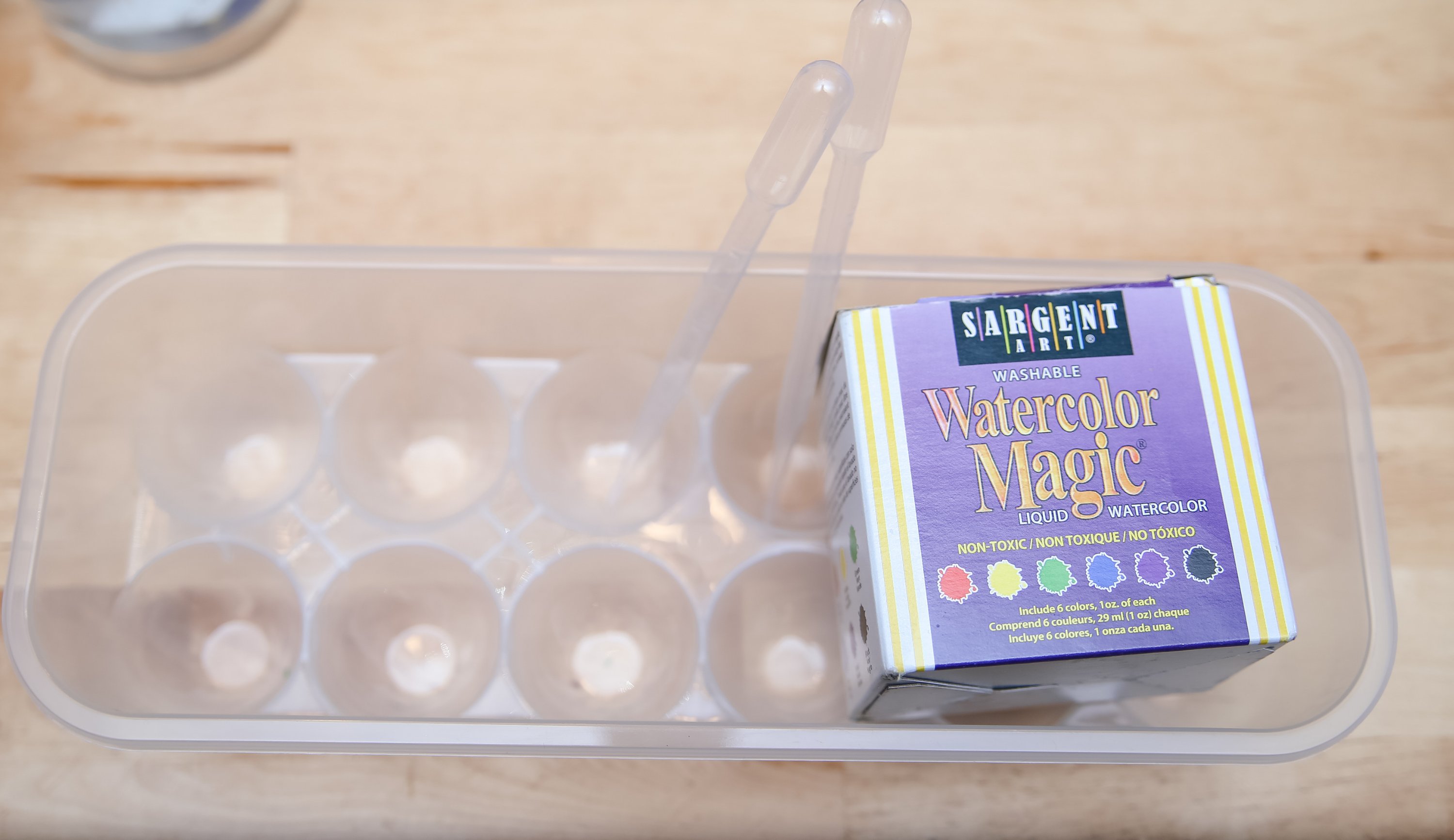
Supplies & Directions:
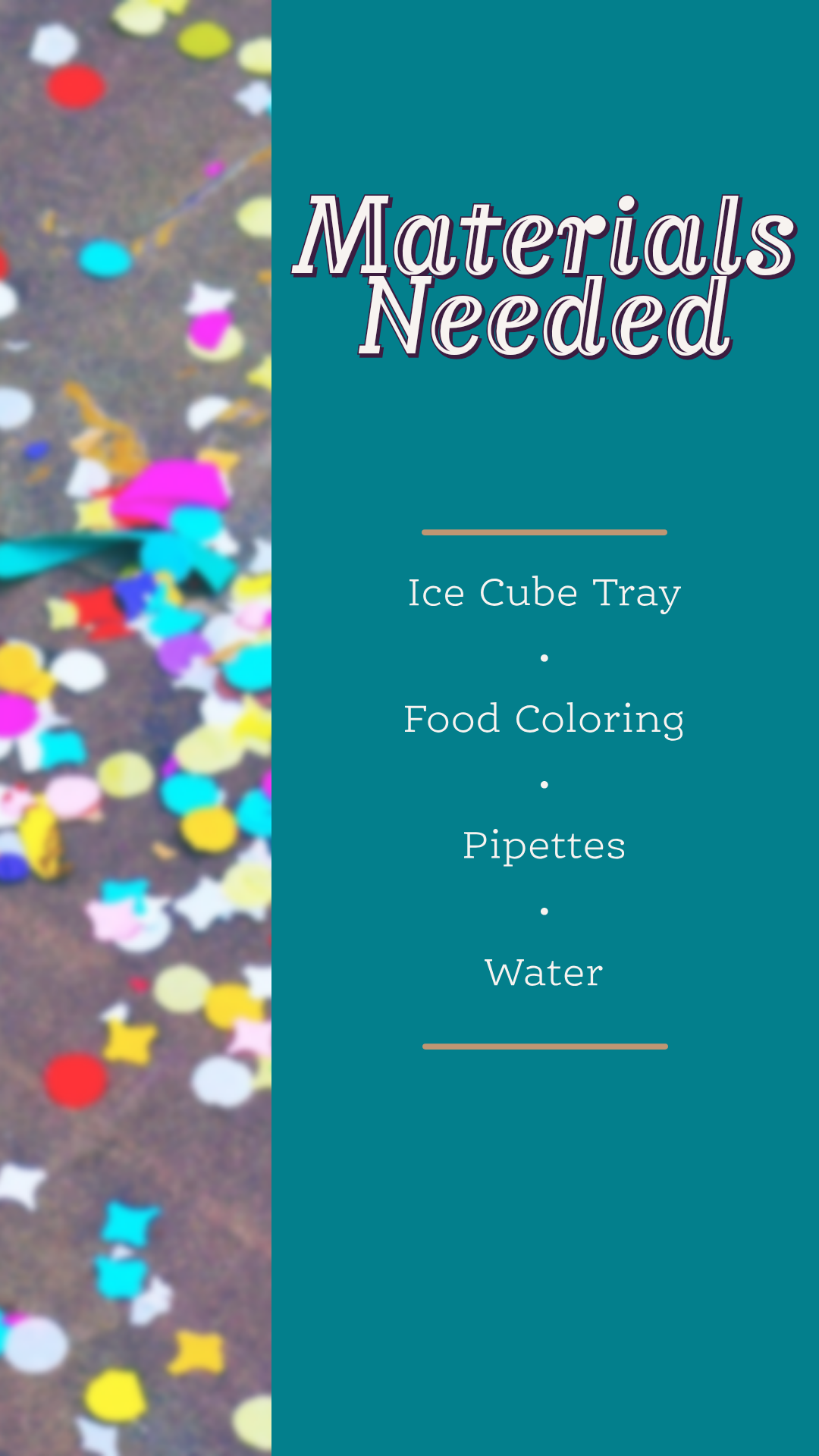
*Pro Tip: use an egg storage container instead of an ice cube tray to contain the mess*
For this activity, just drop a few drops of coloring in every other cube slot. For coloring I prefer using Sargents Watercolor-it’s washable, makes pretty colors, and is nontoxic. Fill up the empty ones with water. Then let the fun begin! We used pipettes to mix the colors and many cool combinations ensued! During this activity, we discussed what was happening to the colors and named them. 

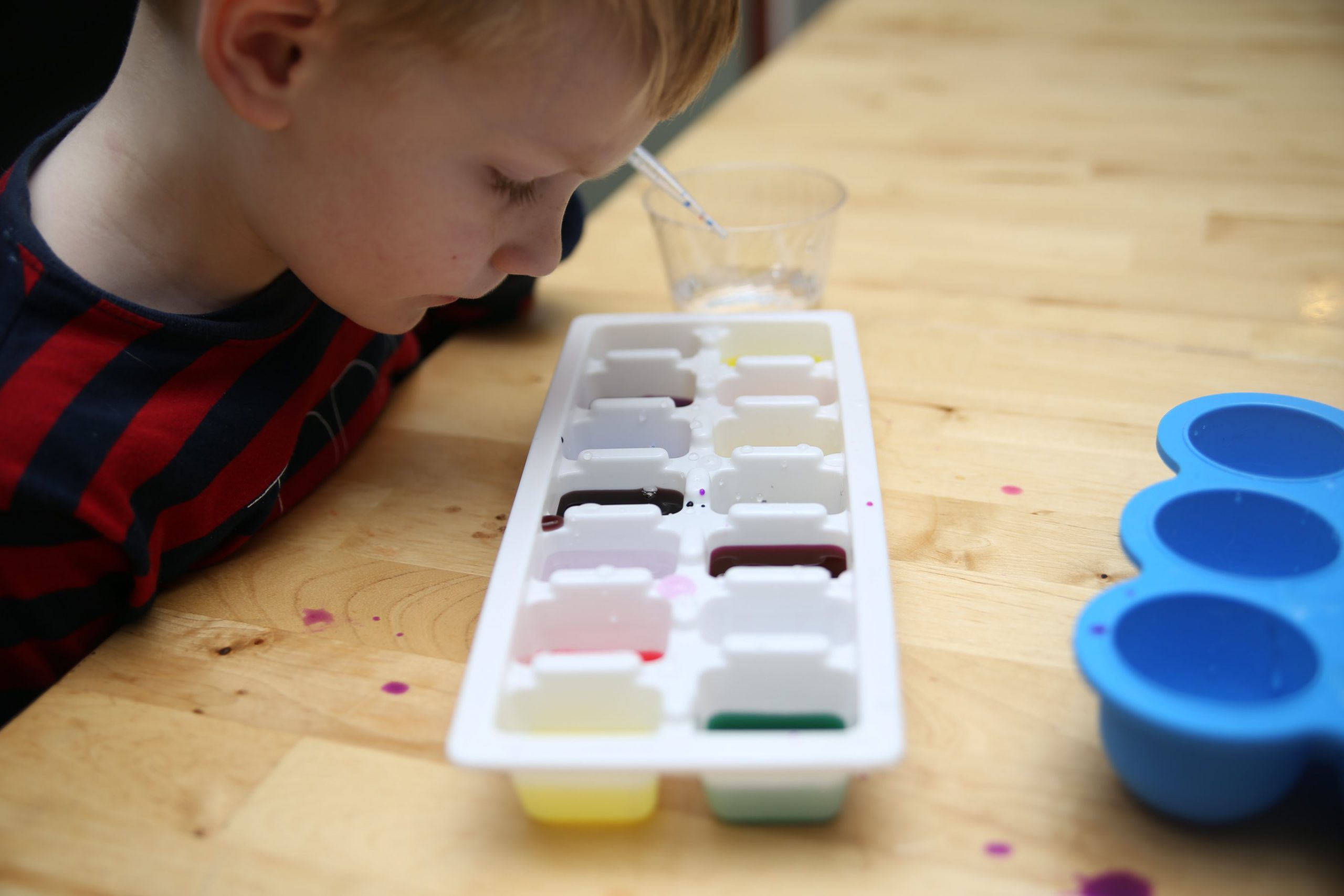

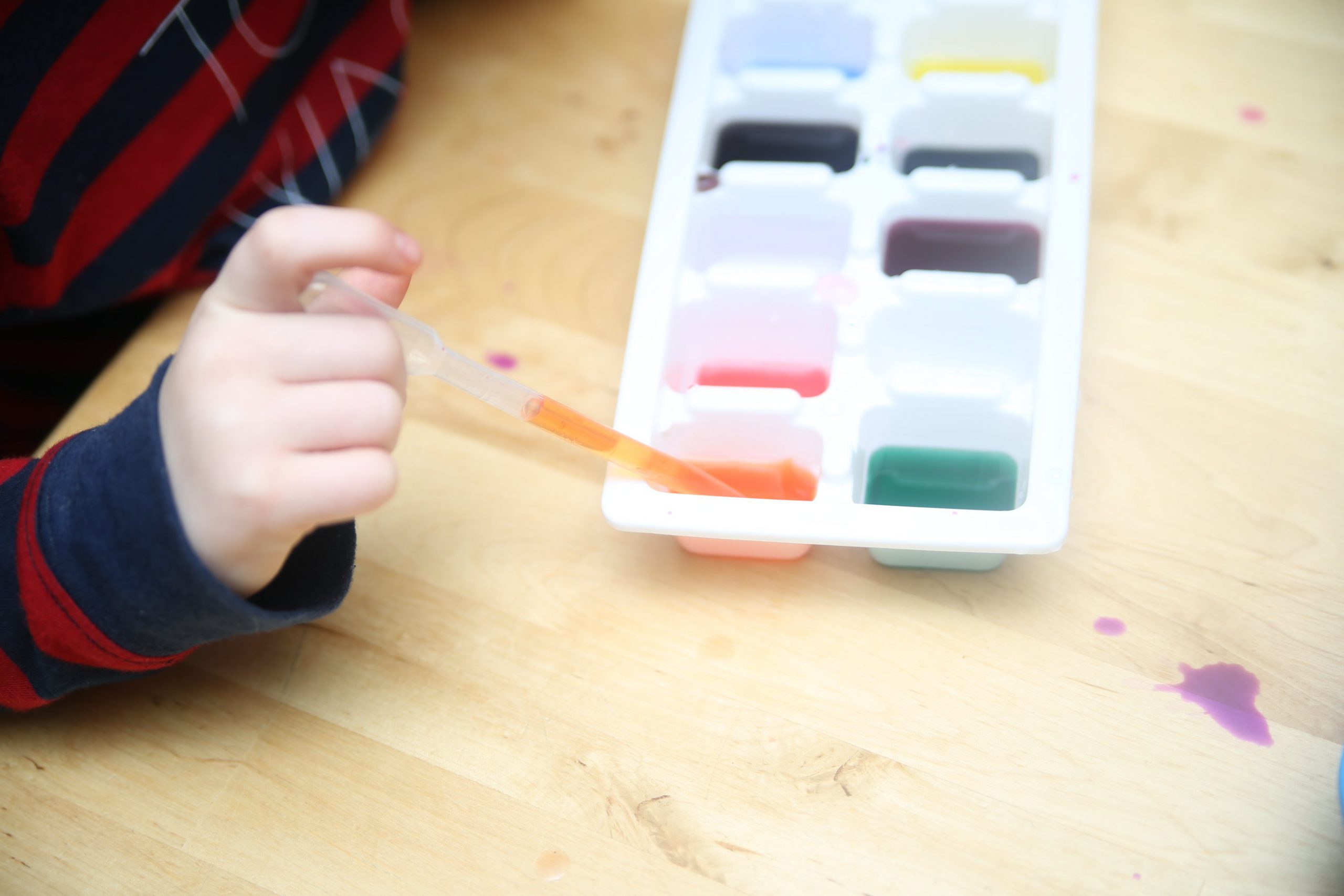
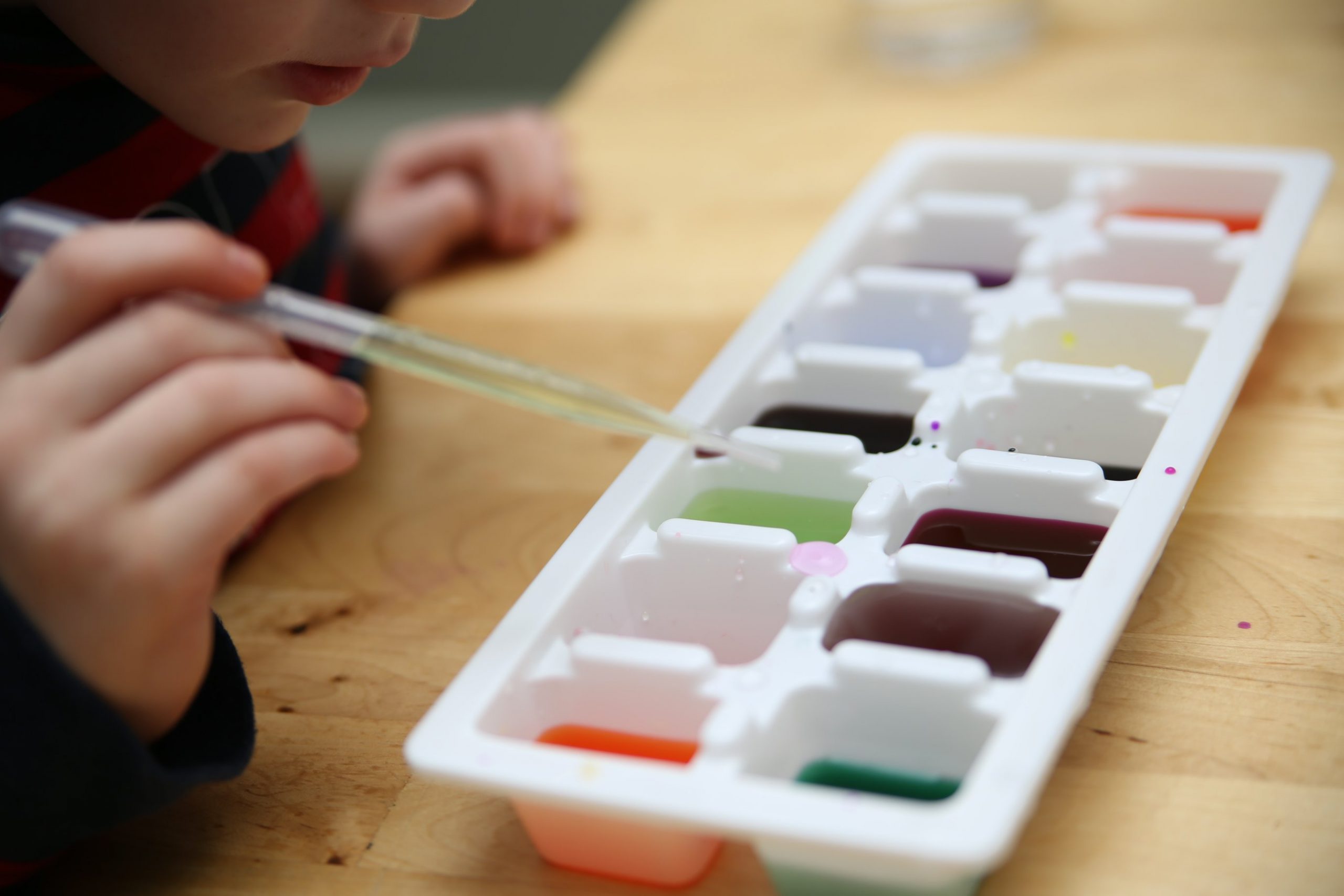
I hope you loved today’s color lessons! For more color fun, check out my previous blog that also incorporates the story “Steam Train Dream Train”
Which activity was your favorite? Comment below and make sure to follow us for more daily fun!

